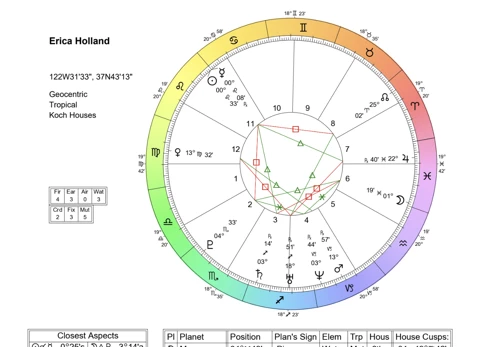Astrology has long been a fascinating subject, captivating individuals with its uncanny ability to shed light on various aspects of life. One of the most powerful tools in astrology is the natal chart, a unique snapshot of the sky at the precise moment of an individual’s birth. Understanding the significance of natal charts unlocks a world of insight into our personality, relationships, and life events. In this comprehensive guide, we will explore the definition, purpose, and components of a natal chart, delve into the interpretation of zodiac signs, houses, and planets, and uncover the profound impact they have on our lives. Get ready to embark on an extraordinary journey of self-discovery and enlightenment as we delve into the intricacies of natal chart analysis.
What is a Natal Chart?
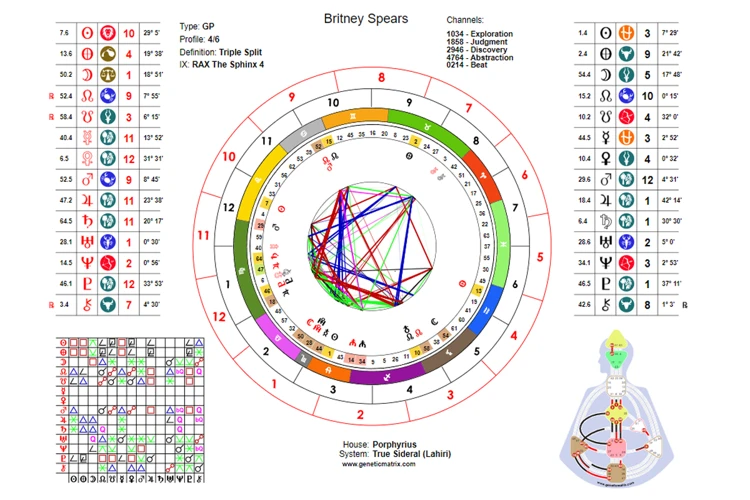
A natal chart, also known as a birth chart, is an astrological tool that provides a detailed map of the positioning of celestial bodies at the exact moment of an individual’s birth. This unique snapshot of the sky is like a cosmic fingerprint, reflecting the energies and influences that shape one’s life. Natal charts serve as a foundation for astrology readings and offer valuable insight into an individual’s personality, relationships, and life events. The purpose of a natal chart is to provide a comprehensive overview of the individual’s character, potential strengths and weaknesses, as well as life lessons and opportunities for growth. It consists of various components, including the sun sign, moon sign, rising sign (also known as the ascendant), and the positions of the planets in specific zodiac signs and houses. Together, these elements create a rich tapestry of information that astrologers analyze to gain a deeper understanding of an individual’s unique path in life. To truly unravel the mysteries of a natal chart, it is necessary to explore the secrets of the ascendant, interpret planetary aspects, and even dive into the complexities of planetary retrogrades. (‘ascendant‘, ‘planetary aspects‘, and ‘planetary retrogrades‘)
Definition and Purpose
A natal chart is essentially a personalized astrological map that depicts the positions of celestial bodies at the moment of an individual’s birth. It serves as a blueprint that astrologers use to decipher the unique energies and influences that shape a person’s life. The primary purpose of a natal chart is to provide insight into an individual’s personality, strengths, weaknesses, and life path. It allows individuals to understand themselves on a deeper level, exploring their inner motivations, desires, and potential. Through the analysis of a natal chart, individuals can gain a greater understanding of their life’s purpose, as well as the challenges and opportunities that lie ahead. It serves as a powerful tool for self-discovery and personal growth, allowing individuals to make informed decisions and navigate life with clarity and intention. Whether used as a tool for self-reflection or as a guide for decision-making, a natal chart provides a profound understanding of an individual’s unique qualities and life journey.
Components of a Natal Chart
A natal chart is a complex astrological tool that is composed of various key components. These components provide essential information about an individual’s personality traits, life experiences, and potential outcomes. The sun sign is one of the most well-known components, representing one’s core essence and primary identity. It reflects the individual’s conscious and outward expression. The moon sign, on the other hand, represents the emotional and subconscious aspects of a person’s identity. It governs their instincts, instincts, and emotional needs. The rising sign, also known as the ascendant, plays a crucial role in determining the individual’s outward demeanor and initial impression on others. It represents how one presents themselves to the world. Other significant components include the positions of the planets in specific zodiac signs and houses. Each planet symbolizes different aspects of life and carries its own energies and influences. The zodiac signs represent different personality traits and characteristics, while the houses indicate specific life areas in which these planetary energies manifest. Together, these components create a dynamic and multifaceted portrait of an individual, allowing astrologers to gain comprehensive insights into their inner workings and life experiences
Interpreting the Natal Chart
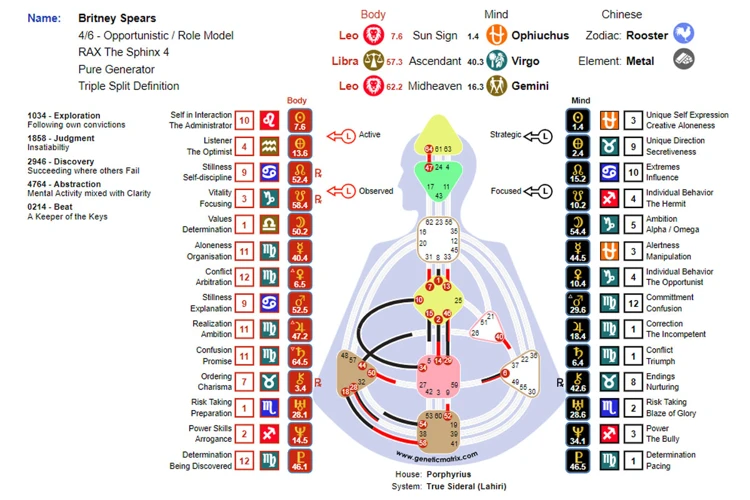
Interpreting the natal chart is a fascinating and complex process that requires a deep understanding of the various components and their interplay. The natal chart consists of the zodiac signs, houses, and planets, each carrying its own unique meaning and energy. The zodiac signs represent different personality traits and characteristics, while the houses signify different areas of life where these traits manifest. For example, the Aries sign is associated with assertiveness and initiative, and if it is in the 7th house of partnerships, it may indicate assertiveness in relationships. The planets, on the other hand, symbolize different aspects of our psyche and the energies we embody. For instance, Venus represents love, beauty, and harmony, while Mars represents passion, assertiveness, and action. When interpreting the natal chart, astrologers examine the positioning of these planets within the zodiac signs and houses to determine their influence on various aspects of our lives. (‘Interpreting astrological aspects‘) plays a crucial role as well, as it reveals how the planets interact and influence one another. By analyzing the intricate web of the natal chart, astrologers can uncover invaluable insights into a person’s personality, life path, and potential challenges and opportunities. Whether it’s through a table or a list, organizing and mapping out the different elements of the natal chart can significantly aid in the interpretation process, providing a comprehensive overview of the individual’s astrological blueprint.
The Zodiac Signs and Houses
The zodiac signs and houses play a crucial role in interpreting a natal chart. The zodiac signs represent different personality traits and characteristics that individuals possess, while the houses represent the various areas of life where these traits manifest. Each zodiac sign is associated with a specific element (fire, earth, air, or water) and has unique qualities and energies. The twelve houses, on the other hand, represent different aspects of life, such as career, relationships, home, and spirituality. Here is a brief overview of the zodiac signs and the corresponding houses:
1. Aries (♈): The first sign of the zodiac, representing new beginnings, individuality, and assertiveness. It rules the 1st house, which represents the self and physical appearance.
2. Taurus (♉): Known for its stability, practicality, and love for material comforts. Taurus governs the 2nd house, which pertains to finances, possessions, and personal values.
3. Gemini (♊): Characterized by curiosity, adaptability, and communication skills. It rules the 3rd house, associated with communication, learning, and short trips.
4. Cancer (♋): Emotionally sensitive, nurturing, and highly intuitive. Cancer governs the 4th house, which represents home, family, and roots.
5. Leo (♌): Radiating confidence, creativity, and leadership qualities. Leo rules the 5th house, which is all about self-expression, romance, and hobbies.
6. Virgo (♍): Analytical, practical, and detail-oriented. Virgo governs the 6th house, associated with work, daily routines, and health.
7. Libra (♎): Known for its love for harmony, partnerships, and diplomacy. Libra rules the 7th house, representing relationships, marriage, and partnerships.
8. Scorpio (♏): Intense, passionate, and deeply transformative. Scorpio governs the 8th house, associated with shared resources, sexuality, and transformation.
9. Sagittarius (♐): Adventurous, optimistic, and philosophical. Sagittarius rules the 9th house, representing travel, higher education, and belief systems.
10. Capricorn (♑): Ambitious, disciplined, and focused on career and achievements. Capricorn governs the 10th house, associated with social status, public image, and professional goals.
11. Aquarius (♒): Unconventional, intellectual, and forward-thinking. Aquarius rules the 11th house, representing friendships, social networks, and aspirations.
12. Pisces (♓): Intuitive, compassionate, and deeply connected to spirituality. Pisces governs the 12th house, which represents introspection, dreams, and the subconscious mind.
Understanding the zodiac signs and houses within a natal chart allows astrologers to analyze how an individual expresses themselves, how they relate to others, and the areas of life that are most significant to them. By examining the position of planets and their aspects within these signs and houses, a deeper understanding of an individual’s unique character and life path can be gained.
Planets and Their Meanings
Planets play a vital role in natal chart analysis, each carrying its own unique meaning and influence. Understanding the significance of these celestial bodies is crucial in unraveling the intricate tapestry of one’s personality and life events. Here are the planets commonly found in natal charts and their meanings:
1. Sun: Representing the core essence of an individual, the Sun signifies one’s identity, ego, and life force. It embodies our conscious self-expression and illuminates our path in life.
2. Moon: Associated with emotions, instincts, and the subconscious, the Moon reflects our emotional needs, nurturing qualities, and how we instinctively react to situations.
3. Mercury: Mercury is the planet of communication, intellect, and mental processes. It influences how we think, express ourselves, and gather information. It also governs our perception and ability to analyze.
4. Venus: Venus is the planet of love, beauty, and harmony. It rules our affections, relationships, aesthetics, and values. It represents our approach to love, as well as our desires for pleasure and connection.
5. Mars: Mars is the planet of action, energy, and motivation. It governs our drive, ambition, assertiveness, and how we pursue our goals. It also influences our sexual desires and passions.
6. Jupiter: Known as the planet of expansion, Jupiter represents growth, abundance, and wisdom. It influences our beliefs, optimism, and opportunities for personal and spiritual development.
7. Saturn: Saturn is associated with responsibility, discipline, and life lessons. It governs our fears, limitations, and the structures we build in our lives. It teaches us valuable lessons through challenges and represents our sense of responsibility.
8. Uranus: Uranus is the planet of innovation, change, and freedom. It represents originality, individuality, and unconventional thinking. It brings unexpected events and liberates us from societal norms.
9. Neptune: Neptune is the mystical planet, representing dreams, intuition, and spirituality. It inspires creativity, imagination, and compassion, but it can also blur boundaries and create illusions.
10. Pluto: Pluto is associated with transformation, power, and rebirth. It governs our deepest desires, secrets, and unconscious patterns. It brings about profound changes and represents our ability to rise from the ashes.
By understanding the meanings of these planets in our natal chart, we can gain valuable insight into our personality, motivations, and life experiences. Delving deeper into the planetary aspects (‘interpretation of planetary aspects‘) can help us uncover the intricate interplay between these celestial forces, providing a more comprehensive understanding of ourselves.
Natal Chart and Personality
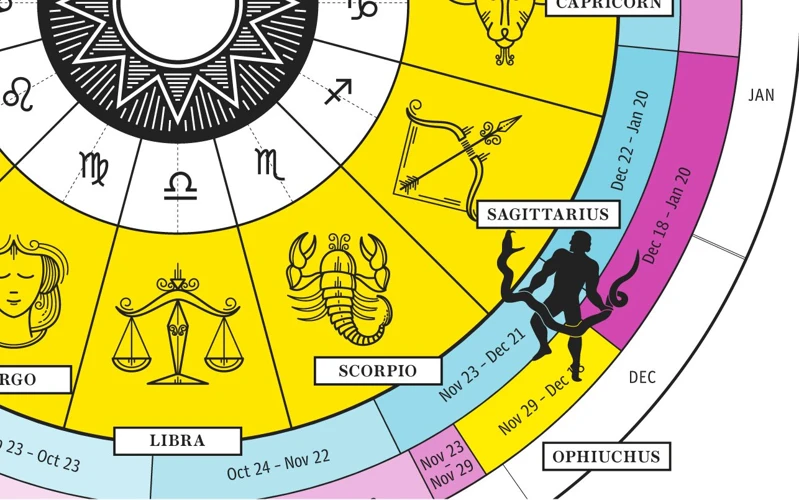
The natal chart plays a pivotal role in understanding an individual’s personality. By analyzing the positions of the sun, moon, rising sign, and planets in the natal chart, astrologers gain deep insights into various traits and characteristics. The sun sign represents the core essence of an individual’s personality, highlighting their ego, aspirations, and the general path they are inclined to follow. The moon sign, on the other hand, reveals the emotional nature and inner needs of a person. It showcases how they nurture themselves and seek emotional security. Meanwhile, the rising sign or ascendant provides insights into the individual’s outer personality, the image they project to the world, and their overall approach to life. The positions of the planets within specific zodiac signs and houses further shape an individual’s personality by adding specific characteristics and energies. For example, Mercury governs communication and intelligence, Venus depicts love and relationships, Mars imparts drive and assertiveness, and Saturn represents discipline and responsibility. Each placement contributes to the complexity and uniqueness of an individual’s personality, forming a multi-layered and intricate portrait. It is through the interpretation of these placements that astrologers can begin to unravel the tapestry of an individual’s personality, allowing for a deeper self-understanding and personal growth.
Understanding Traits and Characteristics
Understanding the traits and characteristics revealed in a natal chart is a key aspect of astrology. Each planet represents different energies and influences, and their positions in specific zodiac signs and houses provide valuable insights into an individual’s personality. The sun sign, representing our core essence, showcases our basic identity and conscious self-expression. The moon sign reflects our emotions, instincts, and subconscious patterns. It delves into our emotional needs and how we nurture ourselves and others. The rising sign, or ascendant, represents our outward personality and how we present ourselves to the world. It embodies our first impression and physical appearance. Other planets like Mercury, Venus, Mars, and Jupiter also contribute to our character and behavior. Mercury influences communication and intellect, Venus governs love and relationships, Mars represents energy and drive, and Jupiter signifies expansion and growth. By analyzing these elements within a natal chart, astrologers can gain a deeper understanding of an individual’s unique personality traits and characteristics, allowing for greater self-awareness and personal growth.
Exploring Strengths and Weaknesses
When examining a natal chart, one of the key areas of focus is exploring an individual’s strengths and weaknesses. Each person possesses a unique combination of planetary influences that shape their personality traits and behaviors. By analyzing the positions of the planets in the natal chart, astrologers can gain valuable insights into these strengths and weaknesses.
Strengths: The natal chart reveals the areas in which individuals naturally excel. For example, someone with the sun in Leo may exhibit charismatic leadership qualities, while someone with Venus in Libra may possess a natural talent for diplomacy and harmony in relationships. These strengths can manifest in different spheres of life, such as career, relationships, or creativity.
Weaknesses: Just as the natal chart illuminates strengths, it also points to areas where individuals may face challenges. For instance, someone with Mars in Aries may struggle with impulsive behavior or a short temper, while someone with Saturn in the 12th house might experience self-doubt or a tendency to isolate themselves. Identifying these weaknesses allows individuals to become aware of potential pitfalls and work towards personal growth and self-improvement.
To further explore strengths and weaknesses, astrologers consider planetary aspects, which are the relationships between the planets in the natal chart. Positive aspects, such as trines and sextiles, can enhance strengths, while negative aspects, like squares and oppositions, may intensify weaknesses. By understanding these aspects, individuals can leverage their strengths and navigate challenges with greater awareness and intention.
Natal Chart and Relationships
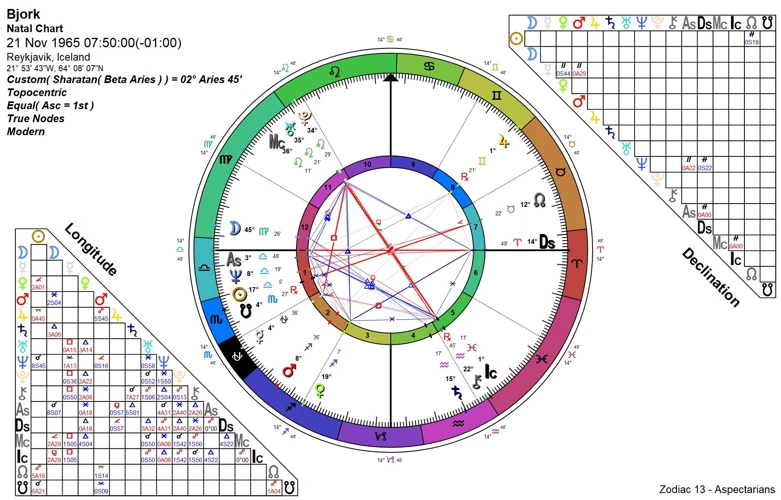
When it comes to relationships, the natal chart can offer valuable insights into compatibility and complementarity. Synastry, the practice of comparing two charts, allows individuals to explore the dynamics between them and gain a deeper understanding of the strengths and challenges in the relationship. By analyzing the placement of planets in each person’s chart and their aspects to each other, astrologers can uncover the harmonious connections and potential areas of tension. For example, a strong Venus placement in one person’s chart may indicate a deep emotional connection and compatibility with another person whose chart features harmonious aspects to Venus. On the other hand, conflicting aspects between Mars and Saturn might suggest challenges in communication and power dynamics. Understanding these dynamics can help individuals navigate relationships with more awareness and foster better understanding and communication. The natal chart can provide powerful insights into the dynamics of romantic partnerships, friendships, and even professional relationships. By delving into the astrological makeup of each individual and examining the potential for harmonious interactions and areas of tension, the natal chart becomes a valuable tool for fostering healthy and fulfilling relationships.
Synastry: Comparing Two Charts
Synastry is a fascinating branch of astrology that involves comparing two natal charts to gain insights into the dynamics and compatibility between individuals. By examining the planetary placements in each person’s chart and how they interact with each other, synastry offers a deeper understanding of the strengths, challenges, and overall compatibility in relationships. One key aspect of synastry is the analysis of aspects, which are the angles formed between planets in the two charts. These aspects reveal the potential for harmony, tension, or even transformation in the relationship. For example, a conjunction between one person’s Sun and another person’s Moon may indicate a strong emotional connection and compatibility in values and goals. On the other hand, challenging aspects like squares or oppositions may highlight areas of friction and potential growth. It’s important to remember that synastry isn’t just limited to romantic relationships – it can also be used to analyze friendships, family dynamics, and even professional partnerships. With careful examination and interpretation, synastry provides valuable insights into the dynamics between two individuals, helping them navigate their relationships with greater understanding and harmony.
Compatibility and Complementarity
Compatibility and complementarity are key factors to consider when analyzing the natal charts of two individuals in the context of relationships. Astrologers examine the planetary placements and aspects of each person’s chart to determine the dynamics and potential harmony between them. One approach is to compare the sun signs, which represents the core essence of an individual’s personality. For example, fire signs (Aries, Leo, Sagittarius) are often compatible with other fire signs due to their shared passion and energy. Similarly, air signs (Gemini, Libra, Aquarius) tend to relate well with other air signs because of their intellectual connection and communication skills. Additionally, analyzing the moon signs can provide insights into emotional compatibility. Water signs (Cancer, Scorpio, Pisces) share a deep emotional intensity, while earth signs (Taurus, Virgo, Capricorn) appreciate stability and practicality. Another vital consideration is the placement of Venus, the planet that governs love and relationships. Harmonious Venus aspects between two charts indicate a natural attraction and compatibility in matters of love and affection. On the other hand, challenging aspects may present obstacles that require conscious effort to overcome. It is worth noting that compatibility is not limited to zodiac signs alone but encompasses the entire natal chart. Understanding the complex interplay of planetary positions and aspects is crucial in determining the overall compatibility and complementarity between two individuals.
Natal Chart and Life Events
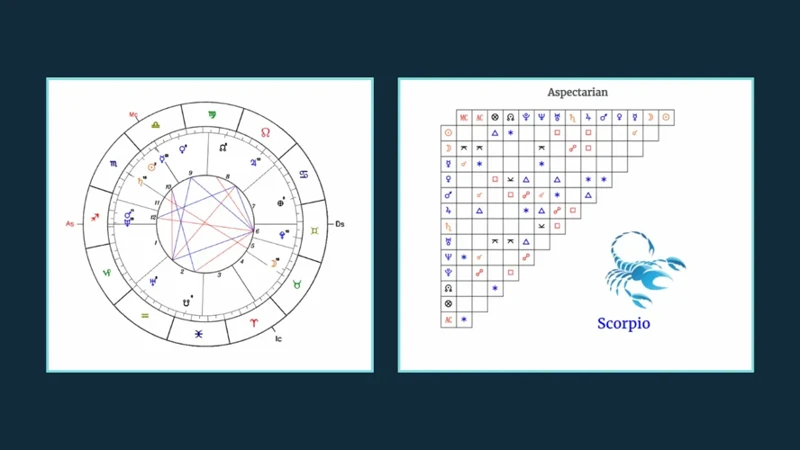
The natal chart not only provides insights into personality traits and relationships but also plays a crucial role in understanding significant life events. Transits and progressions are key elements of natal chart analysis that help determine the timing of important moments in one’s life. Transits involve the current positions of the planets in relation to the natal chart, indicating potential influences and events that may occur. These planetary movements can trigger significant changes, opportunities, or challenges in various areas of life. Progressions, on the other hand, symbolize the individual’s personal growth and development over time. By advancing the natal chart at a certain rate, progressions offer a glimpse into the evolving nature of a person’s life experiences, inner development, and potential future directions. They reveal the unfolding of different phases and transitions, allowing for a deeper understanding of the timing and significance of certain life events. Whether it’s a career breakthrough, a relationship milestone, or a period of personal transformation, the natal chart serves as a valuable tool for anticipating and navigating life’s twists and turns. unraveling-mysteries-planetary-retrogrades-natal-charts
Transits and Progressions
Transits and progressions are important concepts in astrology that help us understand how the movements of celestial bodies impact our lives. Transits refer to the current positions of planets in relation to our natal chart, while progressions signify the gradual changes and development of our natal chart over time. Both transits and progressions provide valuable insights into significant life events and timing. When a planet in the current sky aligns with a planet or point in our natal chart, it can activate certain energies or trigger events in our lives. These transits can bring about new opportunities, challenges, or changes in various areas such as career, relationships, and personal growth. Progressions, on the other hand, involve calculating the movement of our natal chart as we age. This method assigns symbolic movement to each year in relation to our birth chart, offering a gradual evolution in our personality traits, relationships, and life circumstances. By analyzing transits and progressions, astrologers can provide valuable guidance for navigating important moments and decisions in life, helping individuals make the most of the planetary energies at play.
Timing Significant Moments
Timing significant moments in life is a remarkable aspect of natal chart analysis. By examining the transits and progressions in a person’s chart, astrologers can determine when certain events or shifts in energy are likely to occur. Transits refer to the ongoing movements of the planets in the sky and their interaction with the natal chart. These planetary transits can bring about opportunities, challenges, or significant changes that align with the energies of the specific planet and the house it transits. Progressions, on the other hand, involve a symbolic movement of the natal chart over time, reflecting the individual’s personal growth and development. Progressed aspects can shed light on different phases and chapters in life, unveiling new potentials and experiences. By analyzing the timing of these transits and progressions, astrologers can provide valuable insight into the optimal times for career changes, relationship milestones, personal transformations, and other significant life events. Understanding the timing of these moments allows individuals to make informed decisions and embrace the opportunities that align with their life’s purpose.
Benefits of Natal Chart Analysis
Natal chart analysis offers a multitude of benefits for individuals seeking self-reflection and personal growth. By exploring and understanding the intricacies of their natal chart, individuals can gain valuable insights into their own unique personality, traits, and characteristics. This self-awareness can lead to a deeper understanding of oneself and the potential for personal growth. Additionally, natal chart analysis can provide guidance for decision-making. By examining the planetary positions and aspects in their chart, individuals can gain clarity and make informed choices in various aspects of life, whether it be career, relationships, or personal development. Natal chart analysis can also help individuals uncover their strengths and weaknesses, allowing them to harness their natural talents and navigate challenges more effectively. The chart serves as a roadmap, highlighting both the opportunities and potential obstacles in an individual’s life. Natal chart analysis is a powerful tool for self-discovery, personal growth, and decision-making, offering individuals the opportunity to unlock their true potential and align their life with their cosmic blueprint.
Self-Reflection and Personal Growth
Self-reflection and personal growth are two powerful benefits that arise from analyzing one’s natal chart. By understanding the unique makeup of our personality, strengths, and weaknesses, we gain valuable insight into areas of ourselves that might need attention or development. The natal chart acts as a mirror, allowing us to see ourselves more clearly and objectively. It can reveal deep-seated patterns, unconscious motivations, and hidden talents that we may not have been aware of. Armed with this knowledge, we can embark on a journey of self-exploration and self-improvement. It provides a roadmap for personal growth, empowering us to harness our strengths and work on our weaknesses. Whether it’s developing better communication skills, cultivating emotional intelligence, or honing our leadership abilities, the natal chart serves as a guidance system for our personal evolution. Additionally, self-reflection through the natal chart allows us to identify and heal unresolved wounds or traumas from the past. It brings awareness to the areas where we may be holding ourselves back and offers opportunities for healing and transformation. Through this process, we can cultivate a deeper sense of self-acceptance, self-love, and authenticity, leading to a more fulfilling and meaningful life journey.
Guidance for Decision Making
Guidance for decision making is one of the key benefits of analyzing a natal chart. By understanding the unique positioning of celestial bodies at the time of our birth, we gain valuable insight into our innate strengths, weaknesses, and life patterns. This knowledge can be a powerful tool when it comes to making important decisions. The natal chart provides a framework for self-reflection and helps us understand our desires, motivations, and potential challenges. Armed with this awareness, we can make more informed choices that align with our true selves. For example, if the natal chart reveals a strong emphasis on communication and creative expression, it may suggest that pursuing a career in writing or the arts could bring fulfillment and success. On the other hand, if the chart highlights a need for stability and practicality, it may indicate that a more traditional and structured profession is a better fit. Additionally, the natal chart helps us understand the timing of significant life events and allows us to anticipate periods of opportunity or challenge. It can provide a roadmap for navigating important life transitions, such as career changes, relationship decisions, or personal growth endeavors. Ultimately, the guidance provided by a natal chart empowers us to make choices that align with our true nature, leading to a more fulfilling and authentic life path.
Conclusion
In conclusion, the significance of natal charts in astrology cannot be overstated. These complex cosmic blueprints provide profound insights into an individual’s personality, relationships, and life events. The natal chart serves as a roadmap for self-discovery and personal growth, allowing individuals to gain a deeper understanding of themselves and navigate life’s challenges with greater clarity. By analyzing the zodiac signs, planets, houses, and their relationships in a natal chart, astrologers can unlock a treasure trove of information that can aid in decision-making and provide guidance for the future. Whether you’re seeking a greater understanding of your own strengths and weaknesses, exploring the dynamics of your relationships, or trying to make sense of significant life events, a thorough analysis of your natal chart can offer invaluable insights and perspectives. Embracing the power of natal chart analysis opens the door to self-reflection, personal growth, and a deeper connection to the cosmic forces that shape our lives. So, take a moment to explore the depths of your natal chart and unlock the transformative potential it holds.
Frequently Asked Questions
What is the significance of a natal chart in astrology?
A natal chart is highly significant in astrology as it provides a personalized roadmap of an individual’s life. It offers insights into their personality traits, strengths, weaknesses, and life events, helping them gain self-awareness and make informed decisions.
How is a natal chart created?
To create a natal chart, an astrologer needs the date, time, and location of an individual’s birth. Using this information, the positions of the sun, moon, planets, and other celestial bodies at the time of birth are plotted on a circular chart, reflecting the unique cosmic energy present at that moment.
What are some key components of a natal chart?
Key components of a natal chart include the sun sign, moon sign, rising sign (ascendant), and the positions of the planets in zodiac signs and houses. Each of these elements plays a crucial role in shaping an individual’s personality, characteristics, and life experiences.
What is the difference between the sun sign and the rising sign?
The sun sign represents an individual’s core essence and ego, while the rising sign (ascendant) reflects their outward personality and how others perceive them. While the sun sign is determined by the date of birth, the rising sign is determined by the precise time of birth.
Can a natal chart predict the future?
A natal chart cannot predict the future with certainty, but it can provide insights into potential life events and the energies surrounding them. It serves as a tool for self-reflection, personal growth, and understanding the influences that may shape one’s path.
How can I interpret the zodiac signs and houses in my natal chart?
The zodiac signs in your natal chart represent various personality traits and characteristics, while the houses symbolize different areas of life, such as career, relationships, and spirituality. Consulting with an astrologer or studying astrology resources can help you interpret these elements in the context of your natal chart.
What do the planets in my natal chart signify?
The planets in your natal chart possess unique qualities and symbolism. For example, Mercury represents communication and intellect, Venus represents love and relationships, and Mars represents energy and drive. The positioning of these planets in your chart offers insights into how these energies manifest in your life.
Does the natal chart influence relationships?
Yes, the natal chart has a significant influence on relationships. Comparing natal charts through a process called synastry can reveal compatibility, strengths, and challenges in a partnership. Understanding the dynamics between two individuals can help foster a deeper connection and harmony in relationships.
How can a natal chart help with personal growth?
A natal chart provides a profound understanding of one’s strengths, weaknesses, and life lessons. By exploring this information, individuals can gain self-awareness, embrace personal growth opportunities, and work towards becoming the best version of themselves.
Can a natal chart analysis guide decision-making?
Yes, a natal chart analysis can offer guidance in decision-making by providing insights into one’s strengths, challenges, and potential life directions. It can help individuals make informed choices aligned with their unique cosmic blueprint.

